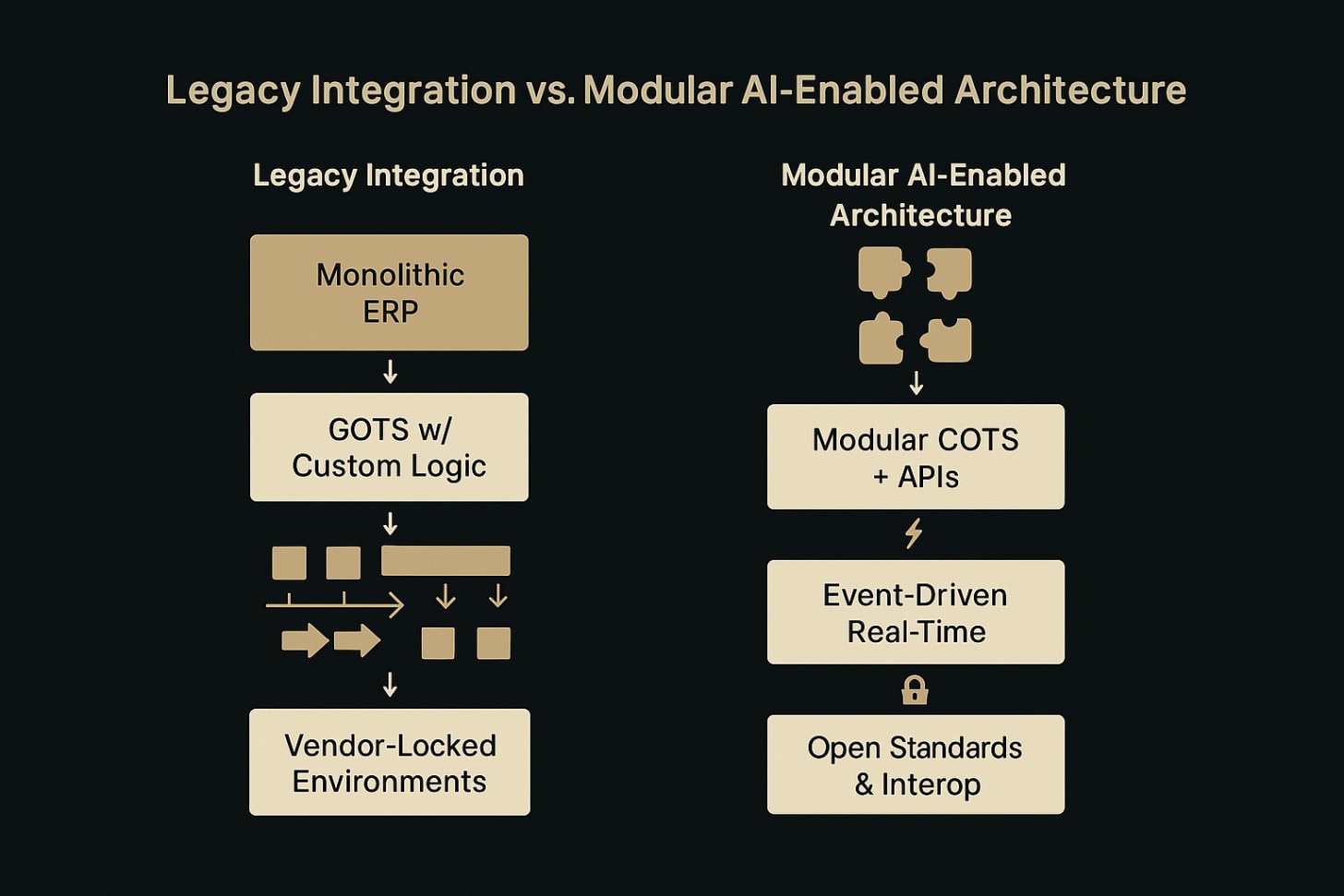We Don’t Need Another ERP
The Hidden Cost of Choosing Legacy GOTS Over Modular AI Solutions
No spin. No slides.
Another billion-dollar ERP initiative is quietly kicking off and it will fail. Not because the developers are bad or the intentions are wrong, but because it’s built on a 1990s playbook: monolithic integration, bespoke government code, and an architecture that assumes stasis, not speed. Meanwhile, modular, AI-native tools - field-tested, composable, scalable - sit on the sidelines, disqualified not by performance, but by policy inertia and acquisition muscle memory.
Despite a decade of reform rhetoric, the Department of Defense continues to default to outdated models for software acquisition. The problem isn’t intent, it’s structure. Legacy GOTS systems are still treated as safe, ERP platforms are seen as transformative, and modular AI tools are deemed unfamiliar or noncompliant. It’s a mindset that flies in the face of every modern directive, including the DoD Software Modernization Strategy (2022), EO 14058 on customer experience.
Congress has made space for change. The 2022 NDAA expanded authorities for Software Acquisition Pathways, DoD is pushing for alternate acquisition pathways via OTAs, and multiple OSD offices are pushing the shift from waterfall to continuous delivery. Yet in practice, most modernization programs still prioritize systems integration over system composability.
Legacy GOTS applications, built decades ago and endlessly patched, are still funded and maintained because they offer predictability. But predictability is not the same as performance. These systems were designed for slow, sequential workflows, not the speed of modern operational environments. ERPs compound the problem by centralizing complexity under the false promise of unification. They are difficult to adapt, costly to extend, and built on closed ecosystems that limit flexibility by design.
In contrast, modular AI-enabled stacks offer a fundamentally different model. They emphasize composability, data-first architecture, rapid iteration, and transparent interoperability. These platforms scale horizontally, adapt to mission variation, and evolve with user feedback. But they don’t win contracts because they don’t resemble the monoliths reviewers are trained to approve. Until procurement language, evaluation metrics, and technical oversight catch up, we’ll continue to over-invest in architectures that promise control but deliver bottlenecks.
Key Points:
Legacy GOTS systems are expensive to maintain and nearly impossible to modernize
ERP programs centralize inefficiency behind layers of abstraction
Modular AI-native platforms are easier to scale, integrate, and secure
The procurement system rewards complexity over capability
Conclusion: The Field Guide to Moving Fast Every program lead knows the difference between what’s required and what works. But too often, the systems we procure are optimized for paperwork, not performance.
That’s where this week’s field guide, our Fix-It File, comes in. Use it to reframe the discussion with leadership, acquisition teams, or evaluators:
Legacy Stack (ERP/GOTS)
Custom-coded GOTS logic
Monolithic ERP platforms
Vendor-locked integration
Slow deployment cycles
System-centric workflows
Modular AI Stack
Modular microservices
AI-native composable tools
Open standards + APIs
Iterative releases
Data-first operations
Pair this table with a procurement cheat sheet that translates modern architecture into acquisition-friendly language. Because the goal isn't to win a meeting… it's to build something that works.



